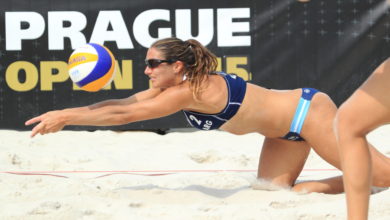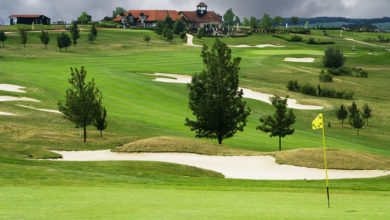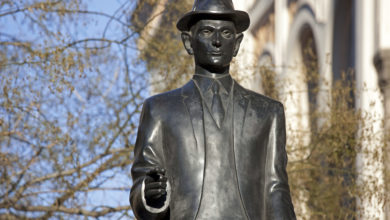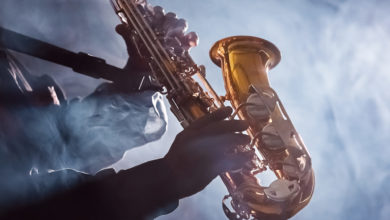Going Out in Prague
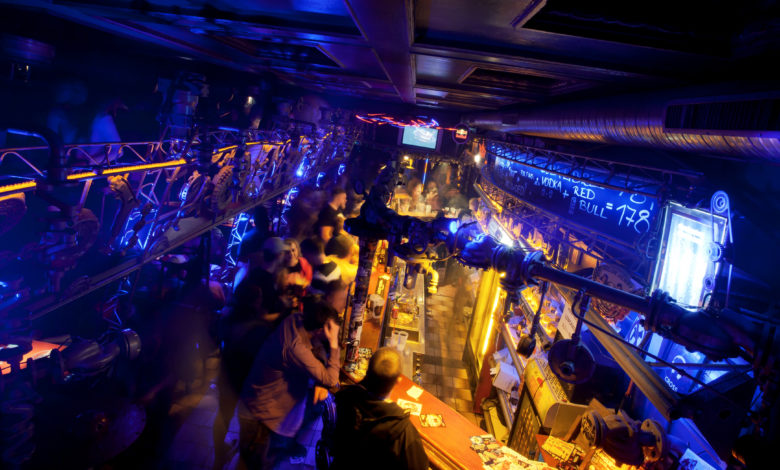
Entertainment Options
Prague after dark offers a wide range of places where you can party all night, or opt for a more relaxed evening with a trip to a theatre, art-house cinema or jazz club. Entertainment also takes the shape of art museums and galleries, operas and orchestras, arena concerts, with a calendar year jam-packed with festivals celebrating everything from the wine harvest to Techno, Rave and African dance. We’ve rounded up the best of Prague nightlife, collecting tips, picks and advice from travellers to bring you an insider’s guide to a night on the town.
Pubs and cafés open before lunch and close at 23:00. Dance and music clubs typically remain open from dusk till dawn. Bars have similar opening hours to clubs, though the casino stays open 24/7. Most museums are open Tuesday-Saturday. Museum’s free admission days vary from one museum to another, though many waive entrance fees once a month. Concerts, both at music clubs and more formal venues, typically start on time and finish before or at 22:00 on the dot due to Prague’s increasingly strict noise laws.
Music Clubs
Prague’s dance clubs throb and heave from dusk till dawn. Fans of sugary pop tunes flock to the ’80s and ’90s nights at Lucerna Music Bar and Futurum. Karlovy Lázně‘s five floors, each devoted to a different style of music, are regularly very busy. Also, on the river, Klub Lávka can be glimpsed from Charles Bridge and, besides multiple dance floors, offers a tequila bar. Duplex Club on Wenceslas Square is known for its rooftop terrace and air of exclusivity—Mick Jagger had his sixtieth birthday party there. Go-go dancers get things going at Retro Music Hall. Nebe, the new Yes Club, www.lafabrique.cz, K.U. Bar Lounge and Double Trouble are centrally located.
The most frequented clubbing venues, however, are located outside the centre. Top clubs include the larger-than-life Abaton, Mecca and the gritty new Berlin-style Klubovna in Dejvice. Creatures of the night (and early morning of the next day) are attracted like moths to a flame to the dim after-hours environs of Le Clan, opening at 02:00, and Studio 54. Techtle Mechtle is one of the largest cocktail bars in Prague and is open all night.
- read more about Nightlife/Clubbing
- read more about Dance and Music Clubs in Prague
Clubs with Live Music
Klub Strahov 007, a student favourite in the middle of a university dorm block, artist David Černý’s art and concert space, Meet Factory, and Žižkov stalwart Palác Akropolis are just a few among the many beer-and-amp music clubs that specialise in ear-splitting good times. Larger-capacity places like the ‘alternative national theatre’ Divadlo Archa, newly re-opened Boxy, Lucerna and SaSaZu are all terrific venues for live music, DJs and dancing, with world music, gipsy punk, stripped-down alt-country, hazy electronics and international bands getting top billing on any given night. Chapeau Rouge Club, Red Room, Bunkr Parukářka, Rock Café and Vagon showcase local and ex-pat bands. For DJs, check out Cross Club, Matrix Club, Wakata, and Styx Smart Club.
Jazz Clubs
Prague one boasts some ten jazz clubs, all within proximity. Some solo artists and bands make a particular club their home: famed guitarist Luboš Andršt and his band jam weekly at the Old Town’s Ungelt Jazz & Blues Club, while Stan the Man, Rene Trossman, and Ondřej Plvec do the same at Malá Strana’s U Malého Glena. Republika has a glamorous, First-Republic dance-hall vibe and Jazz Time score points for their menu and the cheap drinks and dives appeal of the basement. On the waterfront, the Jazz Dock is a fairly new hotspot that serves snacks. For an unassuming club that’s anything but touristy, Balbínka is highly recommended, as is Malostranská Beseda. The annual springtime Jazz at the Castle (Jazz na Hradě) concert brings together top talent from around the globe and home-grown players amid the stately surrounds of the Spanish Hall. Blues Sklep puts on a lively jam session in cellar surrounds.
- read more about Jazz Clubs
Bars
The Old Town, especially the Josefov quarter, boasts the largest concentration of trendy cocktail bars and late-night clubs and tends to be the epicentre of tourist nightlife. Though be aware that prices are higher here than elsewhere. Bugsy’s, Tretters, Aloha, M1 Lounge and Bombay. Lesser-known hidden-gem bars in this tourist-thronged district are +Čili Bárek, Orange Café, Hany Bany, Prague Beer Museum —all at Prague’s secret bar/art venue. The area around Týnská Church has a trio of watering holes for a trio of styles: Týnská Bar and Books caters to the cigar-and-scotch crowd, Týnská literární kavárna is a charming budget haunt for the book lovers amongst you, and Chateau Rouge catches the all-night party-animal lovers. Off Wenceslas Square, Jet Set serves a hefty burger, a wide selection of mojitos, and a night spent at labyrinthine U Sudu, with floors devoted to DJs and table football and pitchers of cheap wine, is an ex-pat rite of passage.
Nearer the river, Hemingway Bar pours proper absinthe and numerous other top-shelf spirits, while neighbouring Duende is raucous fun. Across the bridge in Lesser Town, Blue Light and PopoCafePetl offer good drinks and a jazzy vibe; up-tempo Mad Bar feels like a friend’s flat, and Club Ujezd, just beneath Petřín, is three levels of booze-fuelled fun. The area behind the National Theatre hosts a handful of bar-restaurants serving dance tunes and late-night eats to hungry partiers: Ultramarin, N11, and Czech-celeb-frequented Solidní Nejistota (Solid Uncertainty). The Žižkov and Vinohrady neighbourhoods are hotspots to hang out—in fact; there are more bars per capita here than in any other city district in Europe. In Vinohrady, on the border of Žižkov, club Radost FX, Zelená Zahrada, Zlutá Pumpa, and the new Dirty Dog Cocktail Bar are all well-known for food, drink, and fun. Hapu, situated between the two districts, is a low-key cocktail bar with cosy couches and plenty of attitudes. Žižkov picks are Bukowskí’s, Café Pavlač, and the newly refurbished Blind Eye, a former speakeasy that’s crawling with hipsters.
Several of Prague’s swanky hotels entice discerning clientele with their luxurious lobby bars. In and around the Old Town, the rooftop bar-restaurant at Hotel U Prince is as overpriced and touristy as it gets but boasts a stunning view of Prague’s weathered steeples and spires. Buddha-Bar Hotel’s Asian décor and world music set the pace for an evening of mai-tai bliss. Cloud-9 Bar atop the Hilton mixes signature cocktails. Stylish Brewery Bar in the just-opened Augustine Hotel has quickly become a favourite among Prague fashionistas. The vaulted ceilinged Two Steps bar at Mark Hybernská does a happy hour. Across the river, BaReGo in the Mandarin Oriental offers a premium martini list. Letná locals frequent Fraktal, a late-night beer-and-burger joint that’s an ex-pat Pave for brunch the next morning, too. Continuing down Šmeralova, The Irish Club and some other local gems like the La Bodega Flamenco, a tapas bar, entice. In Holešovice, Cross Club wins points for its funky sci-fi inspired décor, and SaSaZu is a stylish standout.
- read more about Bars and Clubs
Classical Music and Opera
Prague’s finest performance venues are the National Theatre (Národní Divadlo), Estates Theatre (Stavovské Divadlo), Municipal House (ObecnÍ Dům), home of the Prague Symphony Orchestra, Prague State Opera (Státní Opera Praha), and Rudolfinum, home to the Czech Philharmonic. Among the many churches that stage regular concerts are St. George’s Basilica, St. Nicholas’s, and the Spanish Synagogue. Other recommended venues are Lobkowicz Palace at Prague Castle, Bertramka (Museum of Mozart) and Klementinum, a must-see for its stunning hall of mirrors. Tickets are often cheaper if you purchase them directly from the venue’s box office. Online ticket agencies sell tickets for the more expensive seats and tack on a commission, so you may pay substantially more for an orchestra seat, while a gallery seat from the box office may cost less. That said, ticket agencies are convenient. If you want to save, ask for seats one row in front of or behind the priciest seats.
Dance and Ballet
The ballet ensembles at the Prague State Opera and Prague National Theatre put on an impressive repertoire. Prague’s premier venue for contemporary dance is Divadlo Ponec. The top companies play here, and dance and movement festivals are frequently on the line-up, including the annual International Festival of Contemporary Dance and Movement Theatre (Tanec Praha), a showcase of traditional ballet and progressive experimental dance from all over the world that organises performances in Prague and throughout the country during June.
Theatre Performances
More and more venues are subtitling plays, including Svandovo Divadlo, a theatre with a permanent repertory of Czech works, international successes, and classics. The Karlin MUSICS! Theatre makes Czech interpretations of Broadway hits such as The Producers with English subtitles. Black Light Theatre is a Prague speciality; Laterna Magika is just one among many of these experimental theatres in the city. Czech theatres A Studio Rubin, Divadlo Inspirace, and Divadlo na Prádle often stage English-language performances.
Movies
Prague cinemas screen films in their original language with Czech subtitles, except children’s films (or films aimed at younger audiences, such as Harry Potter and 3D movies), which are dubbed. Cinema City Slovanský dům or CineStar Anděl sometimes run original-language versions. Foreign films play in their original language with Czech subtitles, but they are often shown with English subtitles during special events or film festivals. Prague multiplexes (Cinema City and CineStar are two of the more popular chains) show first-run Hollywood blockbusters usually released in the Czech Republic a few months after their US debut, with the exception of worldwide premieres of the Star Wars variety. Cinema City Flora contains Prague’s only IMAX Theatre (though most of the films shown aren’t English-friendly). CineStar Anděl’e ‘Gold Class’ let’s movie-goers veg out in a recliner with full food-and-drink service.
Prague’s five most popular independent art-house cinemas are Kino Mat (Lazarská Street), Kino Evald (Národni třída), Kino Lucerna (Václavské náměstí), Kino Aero (Biskupcova Street), and Kino Světozer (Václavské náměstí), all of which screen Czech films with English subtitles, classics, and low-budget imports as well as hosting mini film festivals and film-related events and exhibits. Bio Oko is a retro gem in a restored functionalist building, showing a mix of second-runs and arty flicks. Kino Lucerna, which recently celebrated its 100th birthday, is the oldest continually running cinema in Europe, showing second-run films and the occasional premiere.
- read more about Cinema in Prague
Stadium Shows
Major international acts—Sting, Kylie Minogue, Madonna—regularly play stadiums like the 02 Arena, Tesla Arena, or the Prague Congress Centre. Tickets for world-class performers usually have world-class prices, too, at around 1,000-1,500 CZK for the good seats. Be aware that some artists have been known to pull out of Prague shows at the last minute; if this happens, you should be able to get your money back from the venue.
Museums
The three main museums, City Gallery Prague, The National Museum, and the National Gallery Prague, each have numerous outposts around town that specialise in a variety of art forms. Beginning with the City Gallery Prague: The Golden Ring House showcases art from the second half of the 20th century as well as contemporary art; works of contemporary and modern art can be found at the Stone Bell House; the Municipal Library offers the best temporary exhibits; while Old Town Hall traditionally focuses on works by young artists. Across the river is the Troja Chateau, where beautiful gardens, a picture gallery of 19th-century Czech art and a ‘Chinese Chamber’, an intriguing mural display of Chinese landscape and architecture, mingle harmoniously for a thoroughly serene experience.
The main branch of the National Museum specialises in natural history, palaeontology and anthropology; it is currently closed to the public for renovations. Music lovers should explore the NM’s three music sites: The Czech Music Museum, the Antonin Dvořák Museum, and one dedicated to Bedřich Smetana at Novotného Lávka right by Charles Bridge. The collection of frescoes at Lobkowicz Palace captivates; sculpture enthusiasts will enjoy the Lapidárium.
The National Gallery Prague’s collection is spread over eight sites. Schwarzenberg Palace and Sternberg Palace exhibit European art from the Classical through Baroque periods. The Mannerist works by the artists of Rudolf ll’s court hang in St. George’s Convent; the prized medieval art found in the Convent of St. Agnes of Bohemia derives from Bohemia and Central Europe. For modern art, go to Veletržní Palace; Kinský Palace pays homage to Czech art of the 17th-20th centuries. The Czech Cubist Museum in the House at the Black Madonna is a beautiful tribute to the Czech Cubist movement in and of itself.
Prague Castle’s exhibition spaces are plentiful. The Riding School (Jízdárna), the Imperial Stables (Císařská konírna), the Ball Games House (Míčovna), and Renaissance Queen Anna’s Summerhouse Letohrádek Královny Anny, also known as the Belvedere) all curate a variety of temporary exhibits. Prague Castle Gallery houses Emperor Rudolf’s collection and works from the Dutch, German, and Italian schools. In addition to Veletržní Palace, Czech and international contemporary art are on view at the newly opened Dox Centre for Contemporary Art. Galerie Rudolfinum is one of the most exciting art venues in Prague. A recent wave of successful exhibits focusing on photography and mixed media from Damien Hirst, Cindy Sherman, and Andy Warhol have secured the gallery’s position as a success on an international scale. Museum Kampa holds an impressive collection of Central European modern painting. The newly opened Arthanka Museum of Young Art (AMoYA) excites. Leica Gallery Prague, Atelier Josef Sudek (a collection of the famed photographer’s work, as well as other modern Czech photography, housed in the artist’s former apartment), and Manes Gallery merit a visit from photography fans.
Other must-see Prague museums: The Jewish Museum, The Museum of Decorative Arts (UPM), which focuses on historical and contemporary crafts and applied arts and designs; the newly reopened National Technical Museum, one of the oldest in Europe; and the National Memorial at Vítkov. The Franz Kafka Museum, Mucha Museum, and the Communist Museum are geared toward tourists but definitely worth a look, perhaps with visitors in tow.
- read more about Museums and Galleries
Open-Air Performances
The open-air cinema on Střelecký Ostrov typically begins in early July and runs until the end of September. All Czech films are shown with English subtitles, and refreshments are sold. Bands often perform before the screenings. Prague’s opera and concert season traditionally come to a close in the summer, but the show must and does go on, with open-air productions in glorious locales. Maltese Garden (Maltézská zahrada), Lebedour Garden (Ledeburská zahrada), Wallenstein Palace Garden (Valdštejnská zahrada), Vyšehrad Gardens, and Garden Na Valech schedule regular evenings of free music, while the Summer Shakespeare Festival (Letní Shakespearovské slavnosti), brings the bard to the castle. Though most of the performances are in Czech, the magic of experiencing A Midsummer Night’s Dream on a midsummer night’s stage on the grounds of Prague Castle is enough to make you forget this trivial detail.
Alternative Sites
MeetFactory – Ke Sklárně 15, Prague 5, www.meetfactory.cz
The incubator for Prague’s alternative culture and original art ideas, MeetFactory is a club, theatre, and gallery in one – a place for the performing arts where the artists are present.
Náplavka – Rašínovo nábřeží, Prague 2
Náplavka is a living cultural spot mainly in the summer months when it offers an overabundance of events of all kinds. Traditional dances on the Vltava riverbank, concerts, theatres, cafés and pubs, but also bike rentals – all in the open air under the enchanting panorama of Prague.

